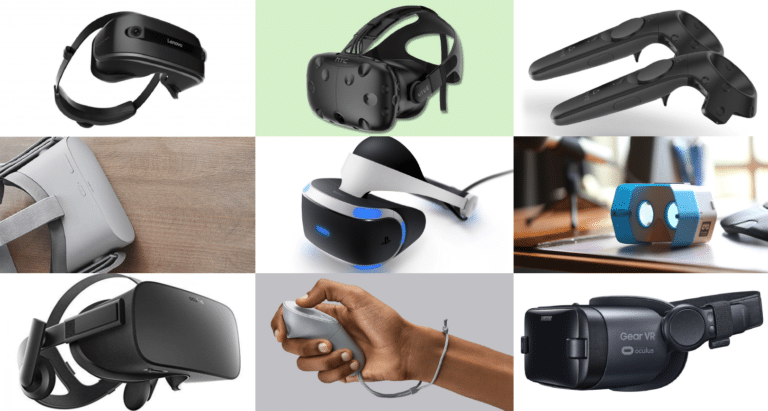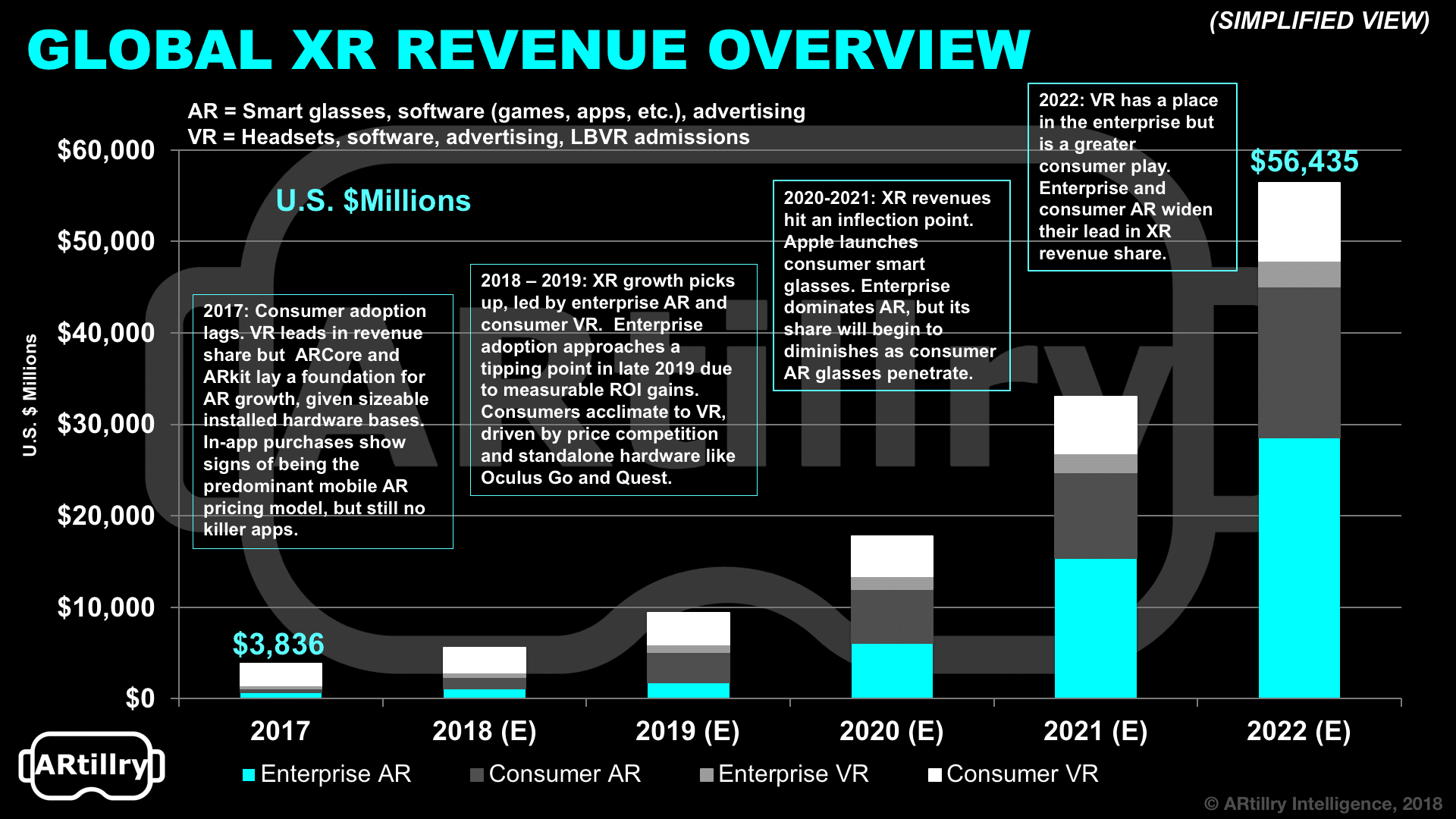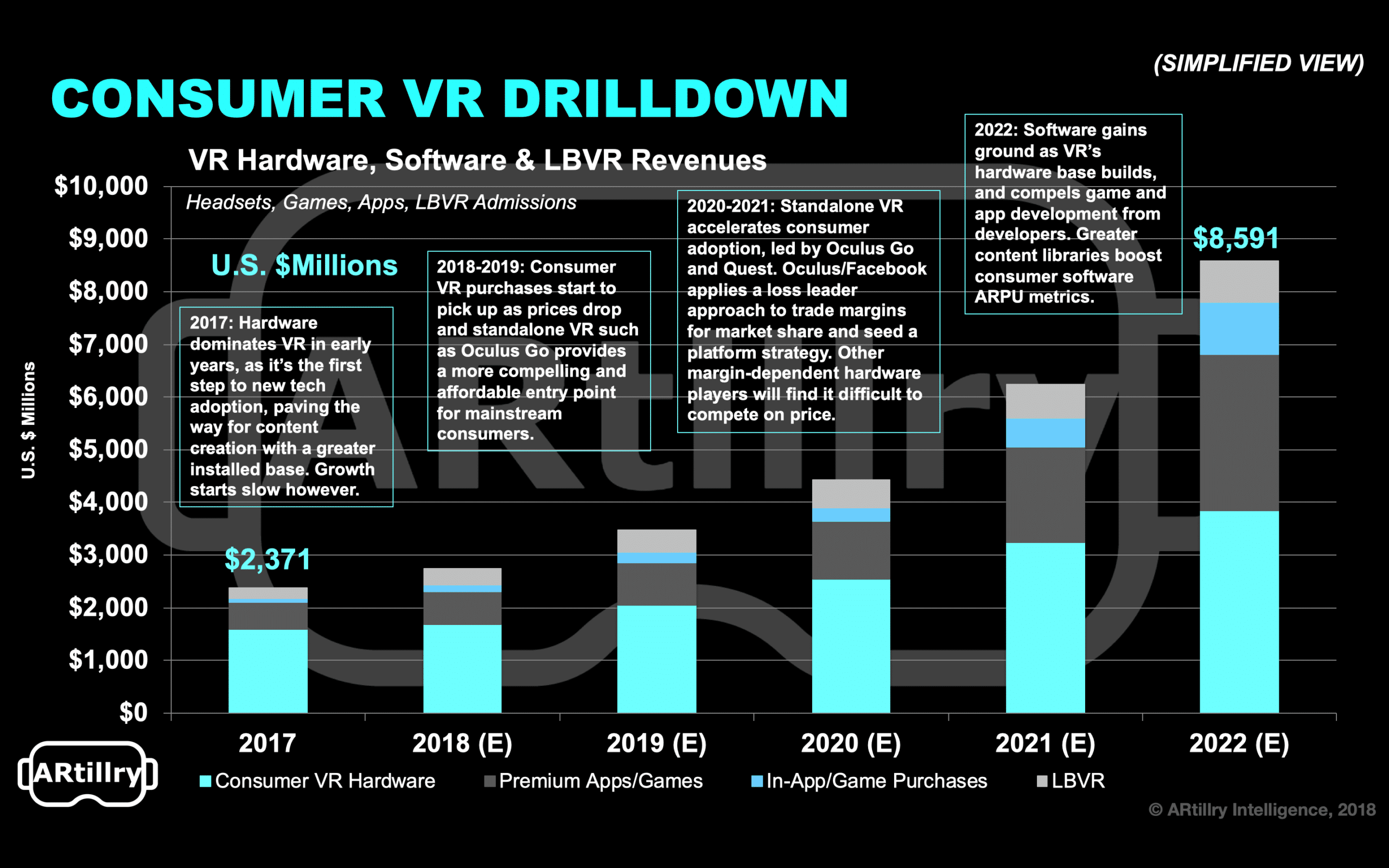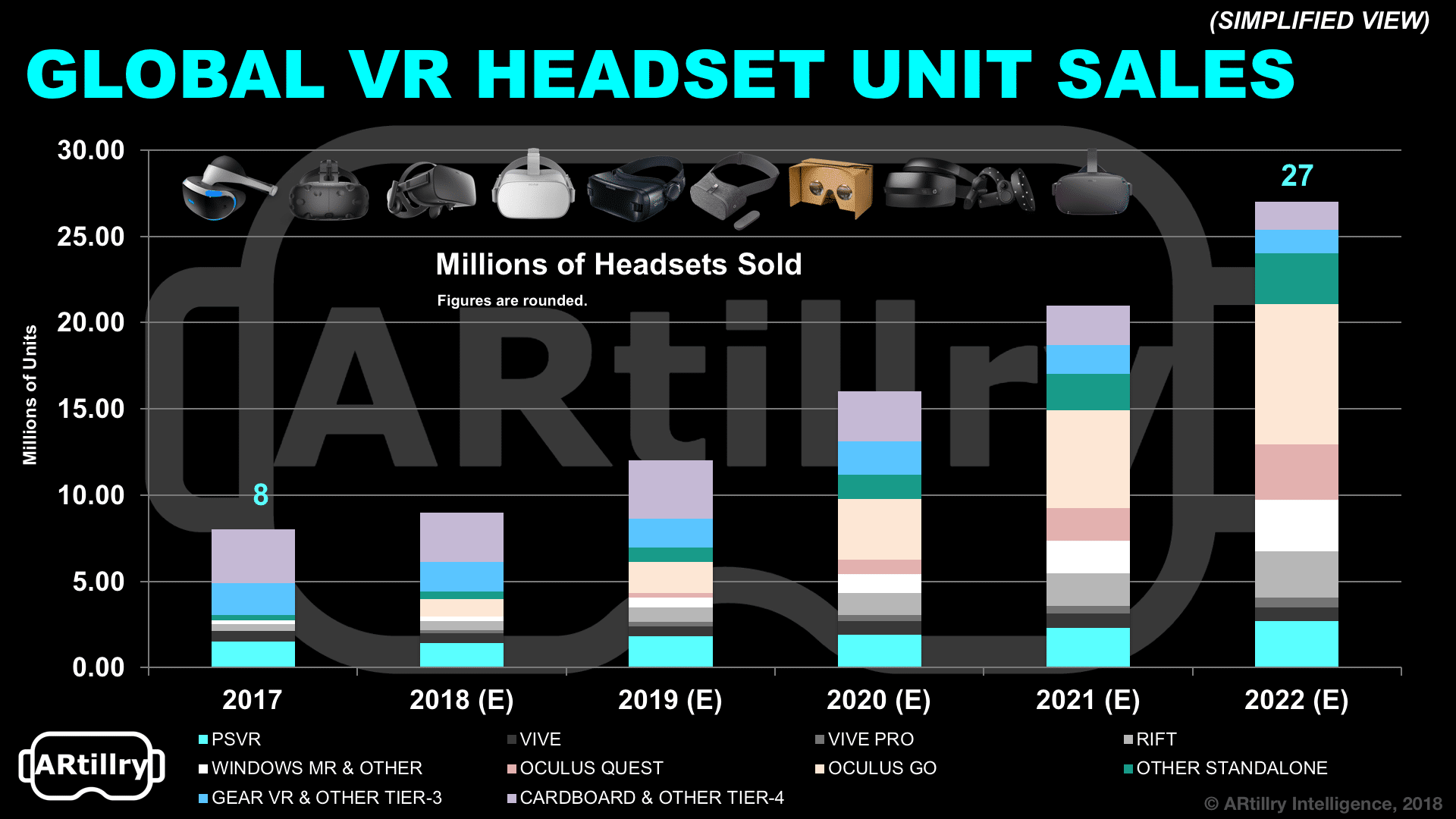
“Behind the Numbers” is AR Insider’s series that examines strategic takeaways from ARtillery Intelligence original data. Each post drills down on one topic or chart. Subscribe to access the full library and other knowledge-building resources.
Many of us agree that XR will be transformative. But it’s a matter of when and how much. So ARtillry Intelligence ventured to quantify the revenue outlook in more precise terms. The result is our latest XR revenue forecast. This week we examine the consumer VR portion.
But before we do that, what’s the overall XR revenue outlook? We project it to grow from $3.8 billion in 2017 to $56 billion in 2022. That includes AR, VR, and enterprise and consumer segments of each. Those are then subdivided by hardware, software and advertising revenues.
So where’s that money going? The largest sub-sector is enterprise AR, which will comprise roughly 51 percent of all XR revenues by 2022. That has a lot to do with the scale achieved through wide applicability across enterprise verticals; and a form factor that supports all-day use.

Historical Parallels
Moving on to Consumer VR, it’s the third largest revenue category in the outer years of the forecast, right behind consumer AR. But it should be noted that it’s the largest XR sub-sector today. Specifically, we project it to grow from $2.3 billion in 2017 to $8.6 billion in 2022.
Though it leads XR sub-sectors in revenue today, consumer VR revenues have flattened while other sectors are trending upward. This is mostly due to revenue from early adopters who themselves plateaued in volume. That growth will pick up but other XR sectors will pull ahead.
As it often goes, revenue will be hardware-dominant in early years as its installed base is established. Over time, software (in this case, games and apps) will eclipse hardware revenues with a faster refresh cycle. This hardware/software interplay is common as tech sectors mature.
A greater installed base of hardware will also incentivize VR content creators to invest in development, resulting in more robust VR libraries and greater software spending per user (ARPU). Historical parallels for this dynamic can be seen in mobile apps and console gaming.

Price Competition
Premium apps will dominate software revenues but in-app purchases will contribute to some degree, especially in gaming. Interestingly, the opposite is true in consumer AR, where mobile dynamics cause in-app purchases to be the prevailing revenue model. Just ask Niantic.
Price competition among VR headset manufacturers (e.g. Oculus, Sony, Samsung) will meanwhile accelerate consumer adoption. Oculus Go, at a $199 price point, hits a sweet spot for quality and affordability, and we projected unit sales of 990K last year, which signals seem to validate.
Oculus – with the advantage of Facebook-backing – has the flexibility to apply loss-leader pricing in order to trade margins for market share. That will give it a strong competitive position with Go, Quest and Rift, versus players that are dependent on short-term hardware revenue.

But much of this will be proven in the coming months as we see if Oculus Go’s holiday quarter “moment of truth” had favorable unit sales. And of course, a lot will ride on the forthcoming Oculus Quest launch. We believe Quest and Go will propel the market in the next 18-24 months.
Oculus Go’s $199 and Quest’s $399 price tags are aligned with price-sensitivity and demand inflections indicated in our consumer VR survey with Thrive Analytics. And Quest will have content development advantages — another key demand driver, according to our survey data.
This will all be a moving target and the above just scratches the surface. Stay tuned for more data slices from this forecast (methodology here), as well as the Spring Edition and our next wave of survey data. We’ll publish both in the next few months, just in time for Oculus Quest.
For a deeper dive on AR & VR insights, see ARtillry’s new intelligence subscription, and sign up for the free ARtillry Weekly newsletter.
Disclosure: ARtillry has no financial stake in the companies mentioned in this post, nor received payment for its production. Disclosure and ethics policy can be seen here.
